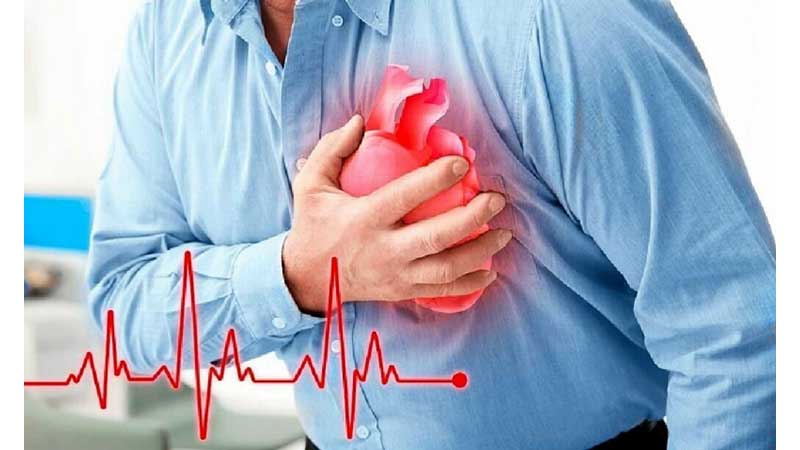
Myocardial Infarction — Heart Attack
- A heart attack is a complete cessation of blood supply in one of the vessels feeding the heart. As a result, the part of the heart muscle that does not receive oxygen dies. It takes just 15–30 minutes of no blood flow for an infarction to occur. When cells die, severe pain arises, and the patient may develop a mental disorder.
- Causes of myocardial infarction:
- 1. Atherosclerotic plaques — their gradual buildup leads to artery blockage. This process can last years or decades and is often accompanied by symptoms of angina.
- 2. Artery thrombosis — occurs due to the rupture of an atherosclerotic plaque. The plaque attracts platelets which combine with red blood cells to form a clot that blocks blood flow.
- 3. Prolonged artery spasm — a rare but possible cause of infarction.
- 4. Inflammation of artery walls — caused by some infectious diseases.
- 5. Formation of blood clots — blockage of vessels by blood clots.
- Symptoms of myocardial infarction:
- The main classic symptom is sharp chest pain radiating to the left arm, lower jaw, and left side of the body. Nausea, vomiting, and a fear of death may also be observed.
- Unlike angina, nitroglycerin does not relieve pain during a heart attack.
- However, not all infarctions are painful; some occur in atypical or silent forms.
- Additional symptoms include shortness of breath, leg swelling, weakness, and anxiety.
- Diagnosis of myocardial infarction:
- Based on three criteria:
- 1. Characteristic chest pain lasting at least 15–20 minutes.
- 2. Changes on ECG — typical signs of infarction that may appear before pronounced symptoms.
- 3. Biochemical markers — specific substances released into the blood from dying heart cells confirm infarction (detected through blood tests).
- Treatment of myocardial infarction:
- Main goals:
- • Relieve pain,
- • Restore blood flow in the damaged artery,
- • Reduce the heart muscle's oxygen demand,
- • Treat heart tissue damage.
- 1. Pain relief:
- At the first stage, the patient experiences severe pain, possible disorientation, and panic. Strong analgesics, including narcotics such as morphine, omnopon, and promedol, are prescribed.
- 2. Restoring circulation:
- Vasodilators, most often intravenous nitroglycerin, are used. Medications preventing clot formation are also prescribed.
- 3. Reducing heart load:
- Medications normalize blood pressure and reduce pulse to 50–55 beats per minute.
- 4. Rest:
- Strict bed rest is prescribed, especially in the first days. Diuretics are given for heart failure.
- Intensive therapy is conducted in the hospital during the first week.
- The most effective treatment today is percutaneous coronary intervention (angioplasty with stenting).
- Risk factors (that accelerate myocardial infarction):
- 1. Smoking — the most significant factor.
- 2. High blood cholesterol levels.
- 3. Sedentary lifestyle and excess weight.
- 4. High blood pressure.
- 5. Diabetes or high blood sugar levels.
- If you have none of these factors, are under 55 years old, and no one in your family had a heart attack before 55, your risk of infarction is extremely low.
- Stay healthy!
3 August 2020
Loading...